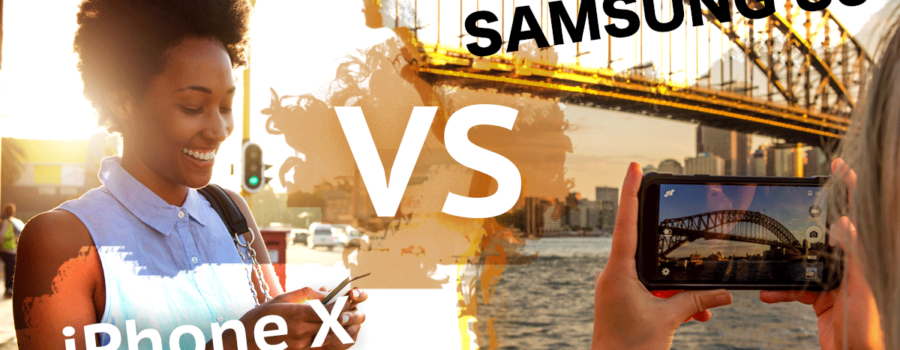Samsung’s Galaxy S9 and S9 Plus have come to fight for Apple’s phone crown with new features and supercharged cameras. But the iPhone X won’t go down easily, and deciding between the newest Galaxy and iPhone may prove tougher than ever.
Price
Samsung has a flat-out advantage here. The cheapest iPhone X (64GB) will cost you $999 (£999, AU$1,579). Expect to spend less on the S9, and you get two price points to choose from. Prices vary from carrier to carrier, starting at $720 (£739, AU$1,199) for the S9 and $840 (£869, AU$1,349). Those are also 64GB models, but — unlike iPhones — they can be easily and massively expanded with the addition of cheap MicroSD cards.
Software and ecosystem
Android Oreo 8.0 vs. iOS 11 is pretty much like comparing apples to oranges (ahem!), but switching from either is a big deal. If you have deep ties to one or the other, this might be another easy deal-breaker.
Even if you’re neutral on your operating system preference, however, remember that your OS choice has impact beyond the phone. If you’ve already purchased all of your TV shows on iTunes, you won’t be able to access them on a Galaxy phone. Bought a HomePod speaker? Also no good on Samsung. Google services, meanwhile, are much more Apple friendly, but still not 100 percent compatible. You can send audio and video from some but not all of your iPhone apps to Chromecast devices, for instance.
Camera
The S9 has a single main shooter, while the S9 Plus has a dual-lens setup similar to that of the iPhone X with a 12MP wide angle and 12MP telephoto lens for better zoom and DSLR-style portraits. The S9 Plus allows you to control the intensity of the blur while you’re taking the shot or after, much like the Note 8. The iPhone X, on the other hand, has Portrait Lighting that lets you play with different lighting options for portraits during or after you take the shot.
Design
Both phones are glass-on-glass with metal frames and barely-there bezels. The S9s have curved edges and screens that appear to spill over the sides. The bezels on the iPhone X are slimmer top to bottom, but you get the intrusive notch at the top. The iPhone comes in monochromatic Space Gray and silver, while the S9 comes in Midnight Black, Coral Blue, Lilac Purple and Titanium Gray.
Headphone jack
This one’s another clear win for Samsung. It has a headphone jack. The iPhone X does not. The X requires you to use a dongle for traditional headphones, use Apple’s Lightning port headphones or you can use the Bluetooth option on both phones.
Face-unlock (Face ID vs. Intelligent Scan)
Both phones have facial-recognition features that can be used to unlock them, but the technology used is different. The iPhone X has a True Depth (depth-sensing) camera on the front of the phone that maps out your face in 3D using infrared dots. Apple says Face ID authentication is even more secure than its Touch ID authentication on the fingerprint scanner.
Storage
The S9 has three tiers of onboard storage options depending on the market (64GB, 120GB and 256GB) with up to 400GB of expandable storage. The iPhone X only offers a 64GB and 256GB option with no SD card slot.
Read full article: iPhone X vs Galaxy S9: How to choose








